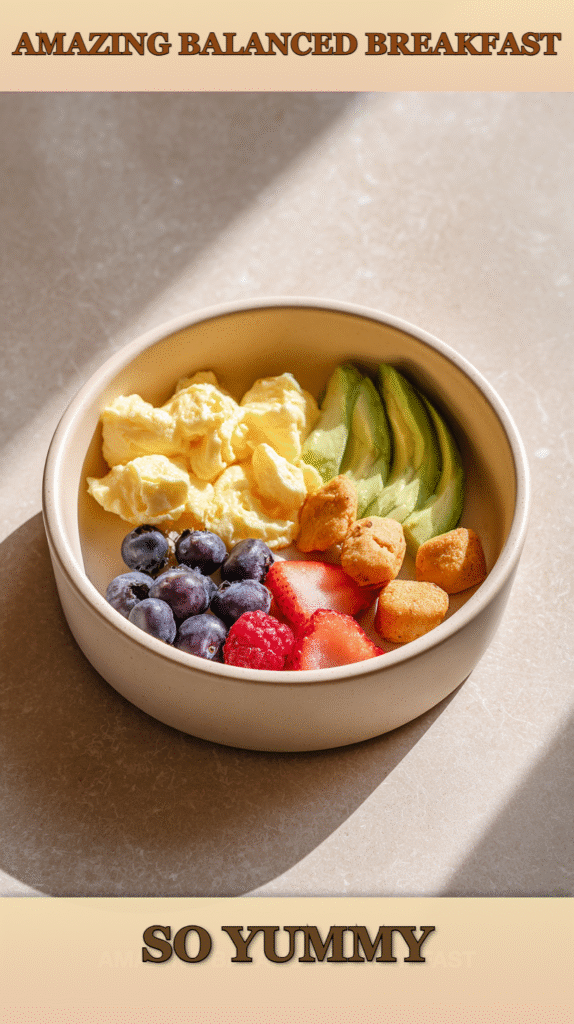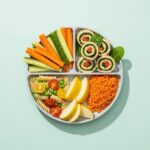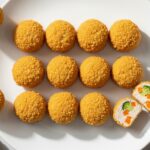Toddlers are constantly growing and developing, and protein plays a vital role in supporting thisrapid phase of life. Think of protein as the building blocks of your child’s body. It’s essential for everything rom building strong muscles to supporting a healthy immune system.
Benefits of Protein for Toddlers: Growth,
Immunity, and Brain DevelopmentProtein isn’t just about building muscles;

it’s a multifaceted nutrient with a wide range of benefits for your growing toddler:
Growth and Development: Protein is crucial for building and repairing tissues, including muscles, bones, skin, and hair. It supports healthy growth and ensures your toddler reaches their developmental milestones.
- •Immune System Support: Antibodies, which fight off infections and illnesses, are made of protein. Adequate protein intake helps strengthen your toddler’s immune system, making them more resilient to common childhood bugs.
- •Brain Development: Protein is involved in the production of neurotransmitters, which are essential for brain function, learning, and memory. Ensuring your toddler gets enough protein supports healthy cognitive development.
- •Energy Levels: Protein helps stabilize blood sugar levels, providing sustained energy throughout the day. This is especially important for active toddlers who are constantly on the move.
- •Feeling Full and Satisfied: Protein is more satiating than carbohydrates, meaning it helps your toddler feel fuller for longer. This can prevent overeating and promote healthy weight management.
How Much Protein Do Toddlers Need?
The recommended daily protein intake for toddlers varies depending on their age and activity level. However, a general guideline is:
- •1-3 years old: 13 grams of protein per day.
While this may seem like a small amount, it’s important to remember that toddlers have smaller appetites. Focus on incorporating protein-rich foods into their diet throughout the day rather than trying to pack it all into>10-15 High-Protein Toddler Recipes
Here are some delicious and easy high-protein toddler recipes to get you started:
1. Cheesy Scrambled Eggs with Veggies (Breakfast/Lunch)
- •Ingredients:
* 2 eggs * 1 tablespoon milk or water * 1/4 cup shredded cheddar cheese * 1 tablespoon chopped cooked vegetables (e.g., spinach, bell peppers, broccoli) * Pinch of salt and pepper (optional)
- •Instructions:
1. Whisk eggs and milk/water together in a bowl. 2. Heat a non-stick skillet over medium heat. 3. Pour egg mixture into the skillet and cook, stirring occasionally, until set. 4. Stir in cheese and cooked vegetables. 5. Cook until cheese is melted and vegetables are heated through. 6. Let cool slightly before serving.
- •Portion Size: 1/2 – 3/4 of the recipe, depending on your toddler’s appetite.
- •Soft-Texture Tip: Ensure vegetables are finely chopped and well-cooked.
2. Mini Chicken Meatballs (Lunch/Dinner)
- •Ingredients:
* 1/2 pound ground chicken * 1/4 cup breadcrumbs (whole wheat preferred) * 1 tablespoon finely chopped>•Instructions:1. Preheat oven to 375°F (190°C). 2. In a bowl, combine all ingredients and mix well. 3. Roll mixture into small meatballs (about 1 inch in diameter). 4. Place meatballs on a baking sheet lined with parchment paper. 5. Bake for 15-20 minutes, or until cooked through. 6. Let cool slightly before serving.
- •Portion Size: 2-3 meatballs.
- •Soft-Texture Tip: Bake until just cooked through to prevent them from becoming dry. Serve with a soft dipping sauce like applesauce or yogurt.
3. Lentil Soup (Lunch/Dinner)
- •Ingredients:
* 1 cup red lentils, rinsed * 4 cups vegetable broth * 1/2 cup chopped carrots * 1/2 cup chopped celery * 1/4 cup chopped>•Instructions:1. Heat olive oil in a pot over medium heat. 2. Add>•Portion Size: 1/2 – 3/4 cup.•Soft-Texture Tip: Blend the soup with an immersion blender for a smoother texture.
4. Greek Yogurt with Berries and Granola (Breakfast/Snack)
- •Ingredients:
* 1/2 cup plain Greek yogurt (full-fat or low-fat) * 1/4 cup mixed berries (e.g., blueberries, raspberries, strawberries) * 1 tablespoon granola (low-sugar)
- •Instructions:
1. Place Greek yogurt in a bowl. 2. Top with berries and granola. 3. Serve immediately.
- •Portion Size: As listed.
- •Soft-Texture Tip: Mash the berries slightly for easier consumption.
5. Black Bean Quesadillas (Lunch/Dinner)
- •Ingredients:
* 2 small whole wheat tortillas * 1/4 cup mashed black beans * 1/4 cup shredded cheddar cheese
- •Instructions:
1. Spread mashed black beans on>•Portion Size: 1 quesadilla.•Soft-Texture Tip: Cut into small, manageable pieces.
6. Peanut Butter and Banana Sandwich (Lunch/Snack)
- •Ingredients:
* 2 slices whole wheat bread * 1 tablespoon peanut butter (smooth) * 1/2 banana, sliced
- •Instructions:
1. Spread peanut butter on>•Portion Size: 1/2 sandwich.•Soft-Texture Tip: Use soft bread and thinly sliced bananas. Important: Be mindful of peanut allergies.
7. Cottage Cheese with Fruit (Breakfast/Snack)
- •Ingredients:
* 1/2 cup cottage cheese (full-fat or low-fat) * 1/4 cup chopped fruit (e.g., peaches, melon, grapes)
- •Instructions:
1. Place cottage cheese in a bowl. 2. Top with chopped fruit. 3. Serve immediately.
- •Portion Size: As listed.
- •Soft-Texture Tip: Choose soft fruits and cut them into small pieces.
8. Tofu Scramble (Breakfast/Lunch/Dinner)
- •Ingredients:
* 1/2 block firm tofu, crumbled * 1 tablespoon olive oil * 1/4 cup chopped vegetables (e.g., spinach, bell peppers) * 1/4 teaspoon turmeric (for color and flavor) * Pinch of salt and pepper (optional)
- •Instructions:
1. Heat olive oil in a skillet over medium heat. 2. Add tofu and vegetables and cook, stirring occasionally, until tofu is heated through and vegetables are softened. 3. Stir in turmeric, salt, and pepper. 4. Serve immediately.
- •Portion Size: 1/2 – 3/4 cup.
- •Soft-Texture Tip: Crumble the tofu finely and cook until slightly softened.
9. Salmon Patties (Lunch/Dinner)
- •Ingredients:
* 1 can (5 oz) salmon, drained and flaked * 1/4 cup breadcrumbs * 1 egg, beaten * 1 tablespoon finely chopped>•Instructions:1. In a bowl, combine all ingredients and mix well. 2. Form mixture into small patties. 3. Heat a skillet over medium heat. 4. Cook patties for 3-4 minutes per side, or until golden brown and cooked through. 5. Let cool slightly before serving.
- •Portion Size: 1-2 patties.
- •Soft-Texture Tip: Ensure all bones are removed from the salmon.
10. Hard-Boiled Eggs (Snack)
- •Ingredients:
* Eggs
- •Instructions:
1. Place eggs in a pot, cover with cold water, and bring to a boil. 2.>•Portion Size: 1/2 – 1 egg.•Soft-Texture Tip: Cut into small pieces or mash.
11. Chicken and Veggie Skewers (Lunch/Dinner)
- •Ingredients:
* Cooked chicken breast, cut into small cubes * Cherry tomatoes * Cucumber, cut into chunks * Bell pepper, cut into chunks
- •Instructions:
1. Thread chicken and veggies>•Portion Size: 1-2 skewers.•Soft-Texture Tip: Ensure chicken is tender and veggies are easy to chew. Remove from skewers if needed.
12. Edamame (Snack)
- •Ingredients:
* Frozen edamame (in pods or shelled)
- •Instructions:
1. Steam or boil edamame according to package instructions. 2. If in pods, let cool slightly before serving and show your toddler how to pop out the beans. 3. If shelled, serve as is.
- •Portion Size: 1/4 – 1/2 cup.
- •Soft-Texture Tip: Choose shelled edamame for younger toddlers.
13. Tuna Salad Sandwich (Lunch/Snack)
- •Ingredients:
* 1 can (5 oz) tuna, drained * 2 tablespoons mayonnaise * 1 tablespoon finely chopped celery * 2 slices whole wheat bread
- •Instructions:
1. In a bowl, combine tuna, mayonnaise, and celery. 2. Spread tuna salad on>•Portion Size: 1/2 sandwich.•Soft-Texture Tip: Use soft bread and finely chop the celery.
14. Quinoa with Chicken and Veggies (Lunch/Dinner)
- •Ingredients:
* 1/4 cup cooked quinoa * 1/4 cup cooked chicken, shredded * 1/4 cup cooked vegetables (e.g., peas, carrots)
- •Instructions:
1. Combine all ingredients in a bowl. 2. Serve warm.
- •Portion Size: As listed.
- •Soft-Texture Tip: Ensure all ingredients are soft and easy to chew.
15. Chickpea Pasta with Pesto (Lunch/Dinner)
- •Ingredients:
* 1/2 cup cooked chickpea pasta * 1-2 tablespoons pesto (store-bought or homemade) * Grated parmesan cheese (optional)
- •Instructions:
1. Toss cooked pasta with pesto. 2. Sprinkle with parmesan cheese, if desired. 3. Serve warm.
- •Portion Size: As listed.
- •Soft-Texture Tip: Cut the pasta into smaller pieces if needed.
Tips for Picky Eaters
Dealing with a picky eater can be frustrating, but remember that it’s a common phase. Here are some tips to help:
- •Offer, Don’t Force: Pressure can backfire. Offer a variety of foods and let your toddler choose what they want to eat.
- •Make it Fun: Use cookie cutters to create fun shapes, arrange food in appealing patterns, or let your toddler help with simple tasks like washing vegetables.
- •Be a Role Model: Eat healthy foods yourself and let your toddler see you enjoying them.
- •Introduce New Foods Gradually: Offer small portions of new foods alongside familiar favorites.
- •Don’t Give Up: It can take multiple exposures for a toddler to accept a new food. Keep offering it, even if they refuse it at first.
- •Avoid Short-Order Cooking: Offering different meals for each family member can reinforce picky eating habits. Serve the same meal to everyone, and let your toddler choose what they want to eat from it.
- •Focus on the Positive: Praise your toddler for trying new foods, even if they>Budget-Friendly Protein Foods for ToddlersProviding nutritious meals doesn’t have to break the bank. Here are some budget-friendly protein sources:
- •Eggs: A versatile and affordable source of protein.
- •Lentils and Beans: Plant-based protein powerhouses that are packed with fiber and nutrients.
- •Canned Tuna and Salmon: Choose canned varieties packed in water for a healthier option.
- •Peanut Butter: A classic and affordable source of protein (be mindful of allergies).
- •Cottage Cheese and Greek Yogurt: Affordable dairy options that are high in protein.
- •Chicken Thighs: Often more affordable than chicken breasts.
- •Store cooked foods in airtight containers in the refrigerator for up to 3-4 days.
- •Freeze leftovers in individual portions for easy meals.
- •Prepare ingredients in advance: Chop vegetables, cook grains, and portion out snacks on the weekend to save time during the week.
- •Label everything clearly with the date.
- •Focusing Too Much on Quantity: It’s more important to focus on the quality of the food rather than how much your toddler eats.
- •Giving Too Many Snacks: Too many snacks can spoil your toddler’s appetite for meals.
- •Using Food as a Reward or Punishment: This can create unhealthy associations with food.
- •Ignoring Your Toddler’s Cues: Pay attention to your toddler’s hunger and fullness cues.
- •Being Too Restrictive: Restricting certain foods can make your toddler crave them even more.








